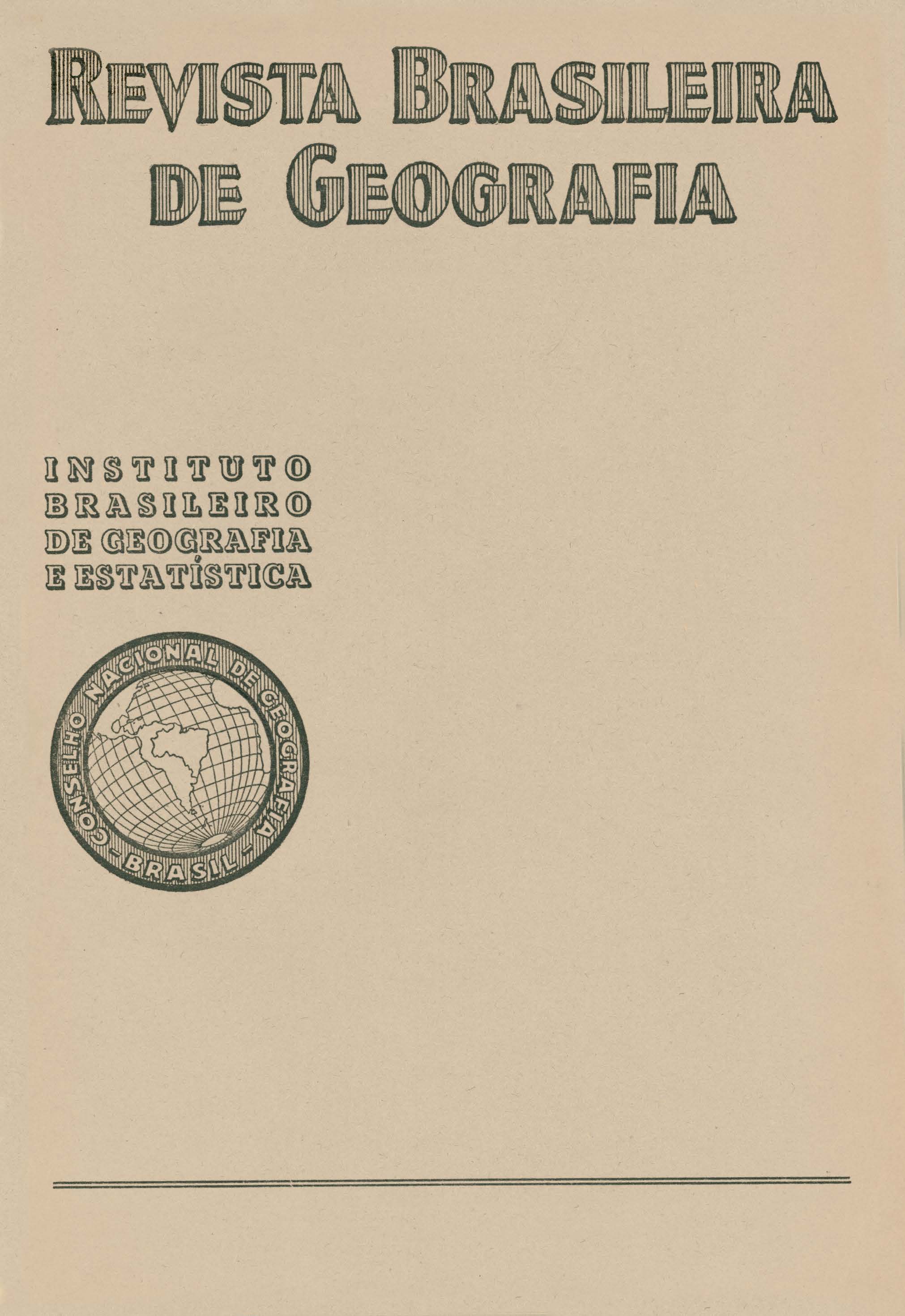A Colônia alemã de Uvá
Keywords:
Goiás;, Uvá – GO;, Geografia da População;, Colonização.Abstract
The author, Speridião Faissol, geog1aphe1 at the Conselho Nacional de Geografia, presents in this work a study of the German Colony of Uvá, in the State of Goiás. The work was divided into four parts.
In the first part, the author concerns himself with the origins of the colony, the arrival of the German immigrants, and the selection of the site Since the and of the last century, the intensification of foreign immigration to Goiás has been under consideration, and, to promote this, a law was passed in 1896 through which the government was authorized to lend a great deal of assistance, for their first year, to colonists who should happen to locate in Goiás After the first World War the p1omotion of immigration was started, and, in 1924, upon the request of the government of the state, 100 German families were sent to Goiás, these after a while setting at Uvá and Itapirapuã although the region was not studied or the immigrants selected.
In the second chapter, the author deals with the physical aspect of the Uvá-Itapirapuã region, which is characterized by low altitude, sandy and rocây soils (the exception being in areas with forests), and with a rather hot climate having two well-defined seasons: one dry and less hot and the other rainy and very hot. These characteristics of the climate have a strong influence on the vegetation, as the region has the same amount of precipitation as the station at Manaus in the midst of the Brazilian equatorial jungle, but does not have an evergreen forest like Amazonia: the distribution of the rains during the year is the principal characteristic of the climate of the region.
The valley o f the Uvá Rivet has a gentle topography, a great extent of forest along its banks, and the best soils, although these do not themselves to mechanized work due to the presence of 1ocks. The results of the analysis of a sample of the soil collected very close to the site o f the colony gives an idea o f the fertility of the soils, which can be considered good for agriculture e in the sections where there is not too much gravel, these section, however, being few.
After settling at Uvá and Itapirapuã, the colonists started farming by planting corn, rice and beans from seeds furnished by the government. At Uvá everything went well, but at Itapirapuã the floods and malaria hinde1 ed matters greatly, and shortly the abandoning of Itapirapuã began. After the government aid ceased, the situation became considerably worse, and in a short time the abandonment began, precipitated by the difficult living conditions of the region. The low priced for agricultural produce, the deficiencies of the soil, administration difficulties, and the lack of a permanent road from Uvá to the nearest consumer's market, which was Goiás - all these brought on and speeded up the abandonment and the consequent failure of the colonization at Uvá.
Actually there, remain seventeen German families and a few other Brazilian ones at Uvá. The German colonists, maladjusted, without help, and unenthusiastic are now dedicated to the extensive raising of cattle and to small amounts of cultivation for domestic consumption.
They still present an outward appearance of German colonists, but their methods of work are the same as those of the Brazilians: cutting down and burning for cultivation, and planting grass for raising cattle. Their standard of living, however, is much higher, their brick and tile houses being well-built and cared for, and their food being more nutritive, milk, cheese, butter, and fresh meat being included.
In conclusion, the colony at Uvá failed for four principal reasons:
- a) - Lack of previous study in selecting the region and the immigrants;
- b) - Lack of a road to Goiás;
- c) - Lack o f good administration; and
- d) - The ease with which cattle could be 1aised, this representing an easier and quicker source of revenue






